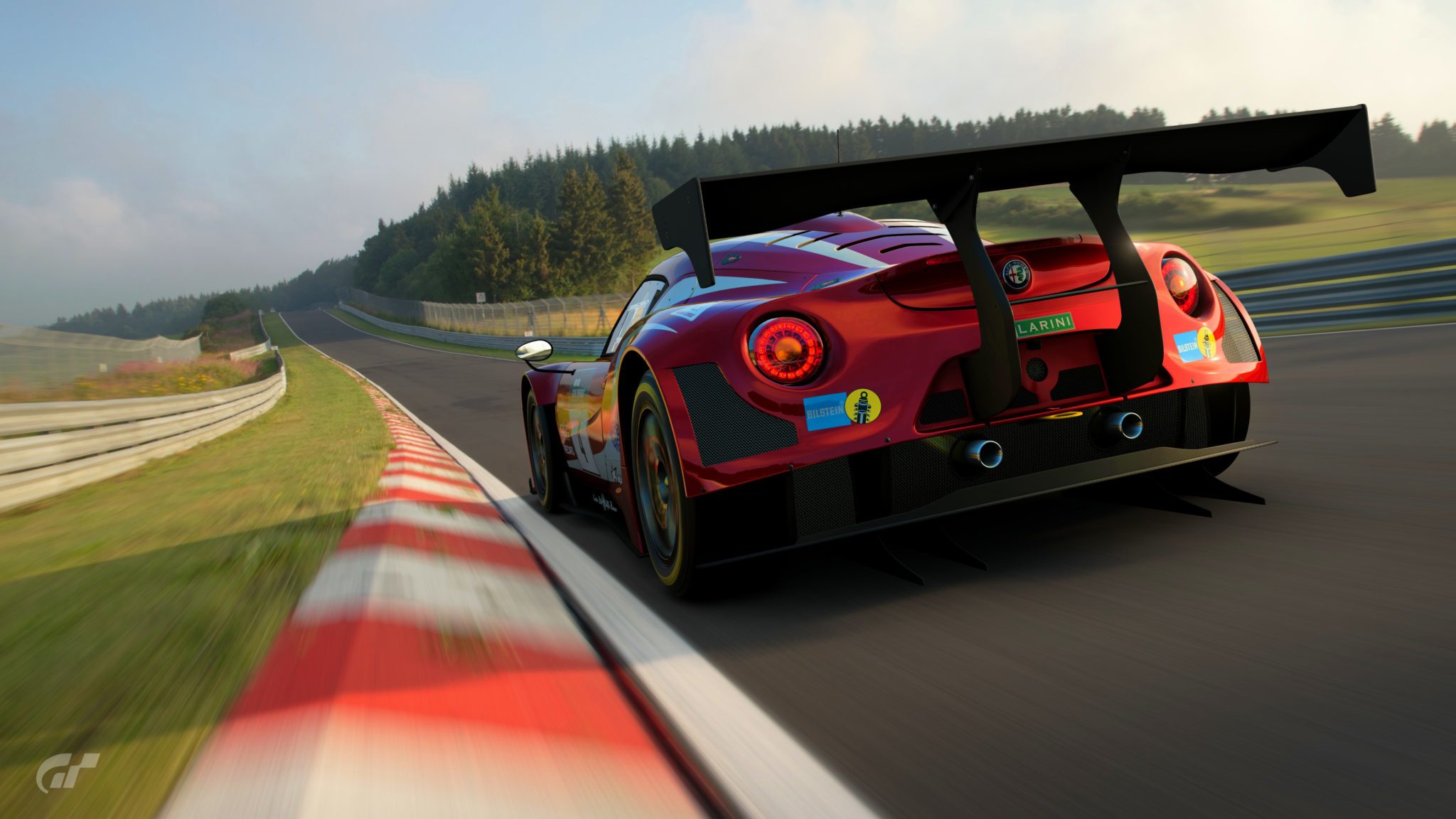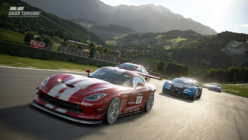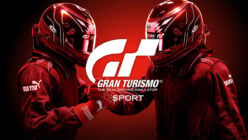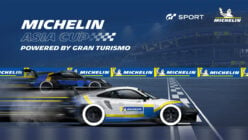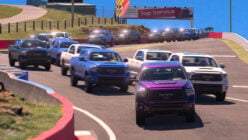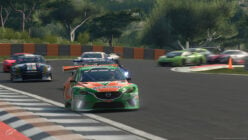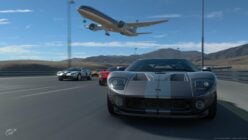How many things in your life have you kept for 20 years? Even better: how many of these two-decade old items have gone relatively unchanged?
The Gran Turismo franchise launched nearly 20 years ago, in December of ’97. It shared the year with two other global phenomenons: Pokemon and Harry Potter. To say that both of those pop culture behemoths have changed and evolved since then is putting it mildly.
To its credit, Gran Turismo has evolved as technology improved. But outside of the spin-off Prologues and Concepts, the mainline games largely followed the same format. You’d start with a lowly car, enter the Sunday Cup, earn credits, upgrade the car, and rinse and repeat. Eventually, you’d have a sprawling collection of virtual rides. It was automotive escapism.
That’s all changed now. At last, a new Gran Turismo title is available on PlayStation 4. GT Sport is the single biggest change Polyphony Digital has made to the franchise since it began. With that five-letter word doubling as its raison d’être, the big question is: does Sport succeed in forging a new path for the series?
Sony provided us with a review code for the game late last week. We played it on a standard PS4, with a DS4, Fanatec CSL Elite, and Logitech G29.
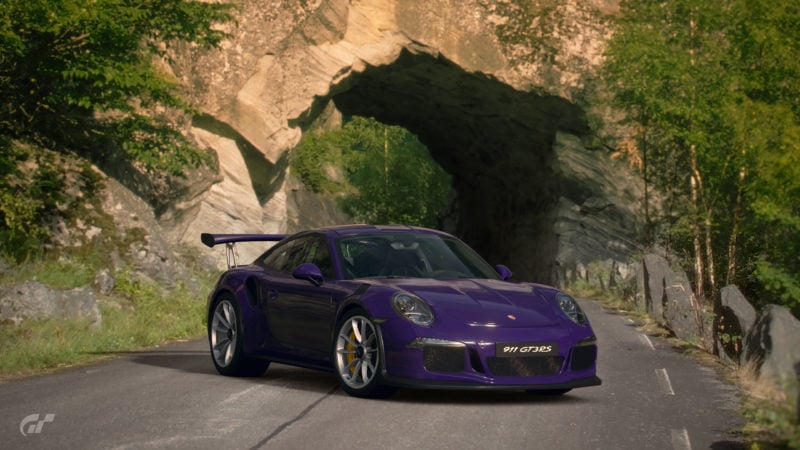
Content and Value For Money –
First, the good news. Upon loading GT Sport up for the first time, it’s immediately apparent this is a Gran Turismo game. The menus ooze class, putting the stars of the show — the cars — front and center. Loading times are also commendably short.
This being GT, there’s still a cursor on screen for navigation. Thanks to the anti-minimalism of the main menu, the cursor is definitely needed. It’s all part of the GT charm, you see! None of the menus suffer the input lag of the PS3 era games, which is a blessing.
The meat and potatoes of a racing game are the car and track rosters. It’s here that GT Sport fails to impress. The car count, in typical GT fashion, only tells part of the story: it may only be two dozen shy of PCARS2, but it feels like a much bigger gap when you’re browsing.
I’m not going to call them “duplicates” — not least because they’re not — but the PD-designed Group cars give this game far, far less actual variety than its competition, or previous GTs. Head over to Mitsubishi, for example, and you’ll find variation upon variation of the Evo X, and a Vision GT.
Yes, Vision GT returns. In fact, thanks to Group variations, there are 38 of them (or, about 22% of the roster). Expect more, too: Kazunori Yamauchi has stated the project isn’t even half done.
Despite striving for a class-based structure, the car list just feels lopsided. There are plenty of fictitious cars to plug gaps in a manufacturer’s lineup, like the Gr.4 Veyron or the afore-mentioned suite of Evos. But then you head over to BMW’s lineup and see that the i3 city car is included. Not only that, but there are three Gr.3 Bimmers.
Arguably even more troubling is the track list, though. GT Sport arrives with 17 locations and 40 variations. Of those, only six are real world tracks: Nürburgring, Brands Hatch, Willow Springs, Suzuka, Bathurst, and Interlagos. Not a bad, globe-trotting selection, but it pales in comparison to nearly all of Sport’s competition outside of Assetto Corsa.
The fictional tracks are a mixed bag. There’s three ovals, which is two too many in this game in my opinion. The rally tracks, well, I’ll leave that for the physics section. Tokyo Expressway returns from the beta earlier this year (boo), but with a new layout that feels much more like the classic night-time highway tracks of GTs past (yay).
On the basis of the above, you may have thought Polyphony had lost its track-making mojo. But the rest of the tracks in GT Sport are easily some of the best work the company has done in years. Dragon Trail was a standout in the beta, and it’s joined by the Lago Maggiore.
This flowing Italian circuit has hints of real-world tracks from the country, and is a fantastic drive in some of the quicker stuff. It also has the mother of all banked hairpins: there’s something deeply satisfying about chucking a car through there. The longer Kyoto circuit is also well-suited to fast cars. Alsace Village starts fairly average, almost like a Driveclub (RIP) track, but its back half is a bit of a gem.
Leave the game running for any significant chunk of time and it’ll introduce you to the Museum feature. It typically showcases quick factoids about the marques in the game, but also, rather incongruously, cultural events that have no ties to the automotive world. I’ve seen it called an “interactive encyclopedia”, but that’s being generous. That’s what GT6 was, when you could actually interact with the cars by driving them.
GT Sport supports the PSVR headset. I want to make that clear: it has a dedicated VR mode, where players are dropped in a two-lap, one-on-one race with the AI. It isn’t available across the entire game, unfortunately. As a taster and a proof-of-concept for the tech, it does its job. The graphics take a hit, naturally, but the immersion makes up for it.
I’ve waited long enough to talk about it: finally, a livery editor is in Gran Turismo! It’s easily one of my most-anticipated new-to-franchise features, and in many ways, it succeeds. Sharing liveries is easy, and Polyphony has made plenty of decals available out of the gate. There will also be an import feature down the road, which should vastly improve the ability to recreate complex shapes — or use a different font.
It’s a good first effort, this livery editor, but it doesn’t quite match the modes found in other games. The chief issue is the inability to group multiple layers together. If you’ve created something using the in-game shapes and want to move it, you’ll have to move each piece individually. The lack of coordinates is a problem as well: there’s no way to accurately place letters on an angle, as just one example. The camera resetting itself every time is a bit of a pain, too.
Admittedly, if you’re handy with Adobe Illustrator, most of this won’t be an issue once the import feature comes online.
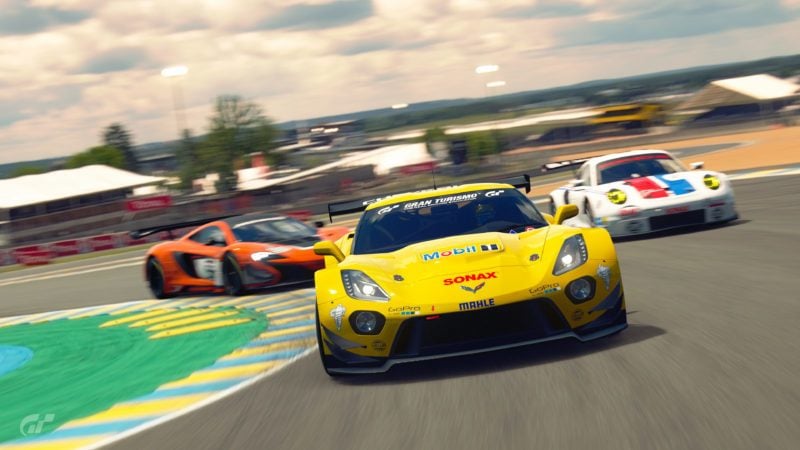
We need to talk about Campaign Mode. There’s been a lot of back-and-forth over it since as far back as the Copper Box reveal in spring 2016. Campaign is comprised of three categories: Driving School, Mission Challenge, and Circuit Experience. If you’re just starting out, we recommend hitting that third option first. It’s the best way to start the game in terms of prizes and credits.
Provided you’re a semi-competent racer, however, Circuit Experience won’t take more than a handful of hours. The challenges are very easy, offering plenty of buffer for gold times. Outside of the Nordschleife — and Fishermans Ranch, one of the maddening rally tracks — I’d say the average time needed is somewhere between five and ten minutes. Although winning a car for 15 seconds worth of driving at Northern Isle is oddly satisfying…
Driving School is the traditional GT license approach with a new name. There’s nothing wrong with that; in fact, license tests have always been a favorite of mine, and I traditionally start there in each new GT. My only gripe? There’s Beginner and Intermediate, but no Expert tests. Yet…
The school, much like the Circuit Experience, feels intentionally easy to usher folks through. For example, the usual start-stop first test has been re-purposed: you no longer need to worry yourself with that pesky second half. Yes, the first test really is just “hold gas to win”. Taking a corner on a track doesn’t happen until the eighth test.
It gets better, though. Slowly, almost imperceptibly, the game teaches you about car control and race craft. This isn’t my first rodeo, so there’s little there for me, but it should prove helpful for those with less of a racing game obsession. Or simply those that haven’t been focused on competitive play until now.
Pit stops are an alright little mini-game. It’s bizarre watching other cars literally disappear into the pit, but it’s done this way to facilitate the cutscene. One of the later school tests involves cutting a stop short to make up time on your opponents. It’s a lesson that comes in handy during the Mission Challenges.
Ah, Mission Challenges. Compared to the license tests and time trials of the other two campaign modes, this is a hefty part of the experience. But that isn’t saying much: there are 64 challenges, and fifteen of those are sector challenges. A third of them are at least races, though they’ll typically be no longer than four laps.
There are hints of diversity here: the Cone Challenge is like FM7’s Top Gear bowling (if massively simpler). Meanwhile, Catch-Up has you hunting down the road version of your racing Alfa Romeo in as short a time as possible, with the distance between you counting down in live time in big, bold numbers. It’s a shame both are one-offs.
On the plus side, the Time Rally from GT6’s Sierra events is back! There’s something strangely appealing about maximizing those time extensions.
The endurance races are easily the standouts of the missions. In fact, the one in the demo was probably the best of the bunch. A 30-lap endurance race around Maggiore in a 911 RSR is an excellent experience in GT Sport. But there’s only six events that require more than 15 minutes of your time, and nary a championship-style points system to be seen.
The level system, credits, Mileage Points (a secondary currency) — it all means parts of the CARPG aspect are alive and well. But it feels at odds with the rest of the game, like it was shoe-horned in to satisfy traditionalists. Which is this, a focused esport racer or a digital automotive sandbox? The CARPG elements suggest the latter, but the content levels, the former.
I completed all of campaign mode in my third day of GT Sport. While I can go back to any of the events if I want, there’s little incentive. The big prizes are one-time only, and given the game’s competitive class structure, I’m not as inclined to buy every car. Time to head to online, then…
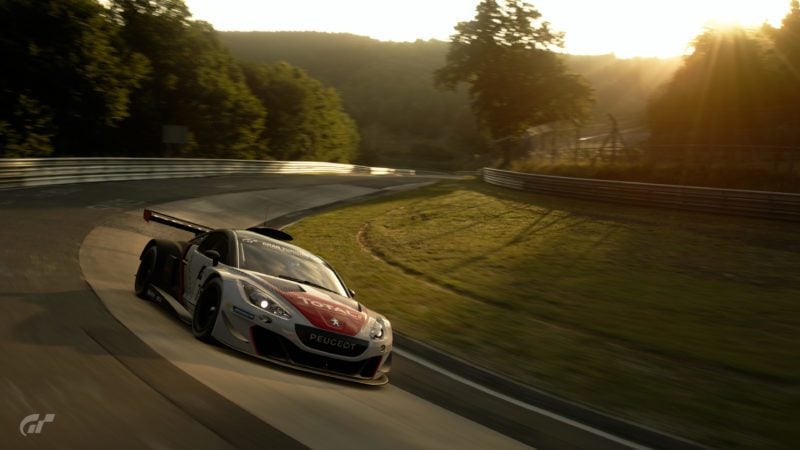
Online Features –
GT Sport has been built around the online experience. While you may have heard that online is only 15% of it, that doesn’t appear to be the case. It may be that percentage in terms of available features (Sport Mode, Campaign Mode, Livery Editor, etc), but the game funnels players towards that eponymous mode.
Before you can enter Sport Mode, you have to complete the Racing Etiquette section. Don’t worry; it’s simply two videos, totalling five minutes. It’s a little strange, since there’s no real explanation about the two aspects of your license. Driver Rating is your general speed, and Sportsmanship Rating is how clean/dirty you are on track.
What racing does happen online, especially in Sport Mode, is a cut above what you typically find from the genre. It seems the offline training sessions really do imprint on other players. My first online race, the whole pack made it through the first two corners at Brands Hatch without incident. That’s frankly unheard in other games.
If you’re sensing a “but”, yes, there is one. Sport Mode, in its current form anyway, is very, very limited. There are three races that cycle every 20 minutes, but according to a notice in-game, the tracks will be updated weekly. This means that at the top of the hour, for the next week, the only Gr.4 race you can take part in that affects your driver rating is at Suzuka East.
I’m very curious to see what the FIA Championship will entail when it launches next month. Even more interesting is the Polyphony Digital Championship, scheduled to arrive a few days later. Currently, there are only brief details available in-game. But as a long-form championship, it could bring some much-needed variety to Sport Mode.
This being GT, there’s still user-created lobbies for players to take part in. They won’t affect your Driver Rating, but if you’re looking for something a little less structured, or want to play with friends, this is where you should go.
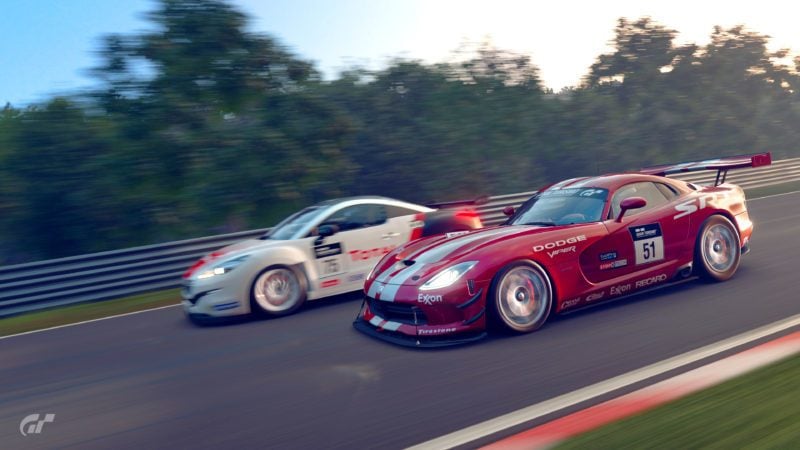
On track, I experienced virtually no lag — it was great! It’s easy to just jump in and drive. I’m not sure I like the fact my qualifying time stays for the entire duration of an event, but I understand why it’s been done that way.
GT Sport features a thorough mock-Facebook like/comment system. You can share just about anything: liveries, photos, replays, even your career milestones. It might sound a little superfluous, but it helps build the sense of community in-game, and that deserves a plus.
But that’s undone by the game’s draconian always-online requirement. During the review period, the servers went down for 48 hours. I had already unlocked all of the tracks in Arcade Mode, so I at least had more variety there, but I could do nothing else. Want to watch some of your (beautiful) saved replays, and snap some photos? Too bad. Want to tune any of your cars, or maybe paint up a livery? No bueno.
What makes this more problematic is that there are absolutely no local saves incase the servers are down. Anything you do, from the moment the connection is severed, will not be saved until the game can re-connect.
It’s a truly baffling decision: it’s not my own connection I’m worried about, but the Sony/PD servers. They were completely solid on Tuesday (Sport’s North American launch day), but Wednesday night, they were spotty again. Relegating players to such a tiny portion of the game when this happens is disappointing.
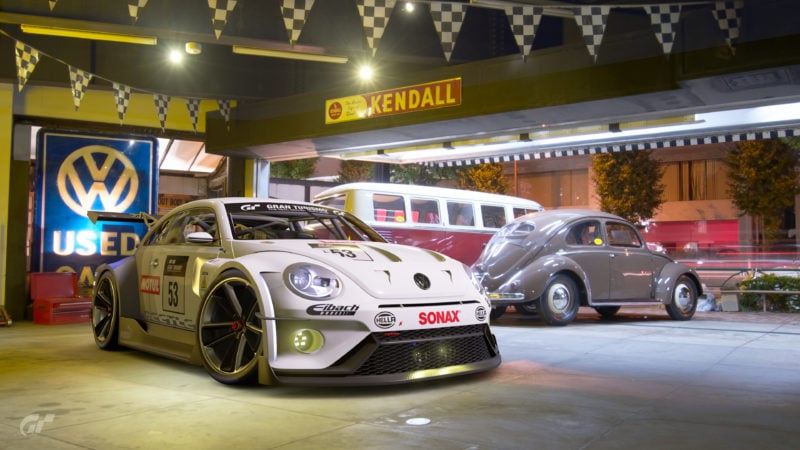
Driving Physics & Handling –
Gran Turismo has always had a reputation for fine handling on consoles. Be it pad or wheel, GT games have stood amongst the best in terms of input and feedback.
Sport largely continues this theme. Road cars feel like they have weight to them, and you sense it every time you slam the brakes. More so than previous GT games, Sport is all about managing this weight balance. Keeping the car stable as you feed it into a turn is the difference between it hitting the apex, or sailing towards the outer Armco.
Moving up to the Gr.4 cars, I hit the Goldilocks section of the game. Whether it was the Mustang (an early favorite from the beta) or the dominant new Cayman, these cars still have a sense of weight to them, but you also get a better idea of grip levels. As production-based cars, the Gr.4 machines are more forgiving than the quicker classes.
Gr.3 starts to feel like it’s floating above the surface. There’s a ton of aero and mechanical grip, but you don’t really feel the latter; you just trust that it’s there — until it’s not. It’s here that Sport’s physics feel like an evolution of GT6’s, specifically the tire model. There’s no sense of the rubber flexing and changing. Tires heat up (and cool down) almost instantly.
Gr.1 is just madness, pure point-and-shoot madness. There’s no subtlety here, especially with some of the Vision GTs, but the manner in which they slice through corners is addictive in its own way. One of the missions involves taking the McLaren VGT around the long Kyoto layout. Half the fun here is daring yourself to dive into corners later and later, relying on the brakes and downforce from that bonkers design to get you through.
On pad, the odd resistance to self-center makes it very hard to predict how the car will react. Countersteering is a gamble. There’s no “a-ha” moment with it: you’re countersteering, and it’s fine, then suddenly without warning, it’s spun the other way. It happens regardless of the class of car. Luckily, Polyphony has already acknowledged there’s an issue here, and a patch is on the way.
Moving over to the wheel, predictably, offers a level of precision that just isn’t possible with a pad. Fanatec just released new firmware for the CSL Elite PS4, enabling GT Sport compatibility before an official in-game update brings it to the game. Once it was dialled in, my wheel felt quite good. Road surface detail is very light — especially on fantasy tracks — but the game transmits rumble strips and the feeling of understeer very well.
Braking hard into turns, I got a clear sense of what the front tires were up to, and could adjust accordingly. The one fly in the ointment is when you overcook things. There’s not a ton of feedback from the wheel when the rear tires have given up. Because of this, you have to rely on visuals to gather up any angle before it becomes unsalvageable. It’s not impossible, but it remains a little unpredictable.
I’m just going to come out and say it: rally physics are awful. They’ve never been great in GT, but that makes it all the stranger that PD continues to push off-road racing, especially in this, its esport-focused title.
It feels like the cars are gliding over everything: they never dig in. Wheel spin is more likely to result in the car moving sideways than forwards, regardless of where the wheels are pointing. It all feels very foreign. There’s certainly a method to doing well in the rally stages — brake early to get the nose pointed in, then steer via throttle — but every time the game presented me with a rally test, I couldn’t wait to get it over with.
I’ll admit, it was a lot of fun racing around Sardegna against Jordan and some of the Polyphony team at E3 — but it was fun because of the people and camaraderie, not because of the game. Rally racing online is going to be an utter wreckfest.
I can’t in good conscience say GT Sport’s physics are better than Project CARS 2. It runs Slightly Mad’s title close, but it’s also operating in a much smaller window than that game does. Not having dynamic time and weather does that.
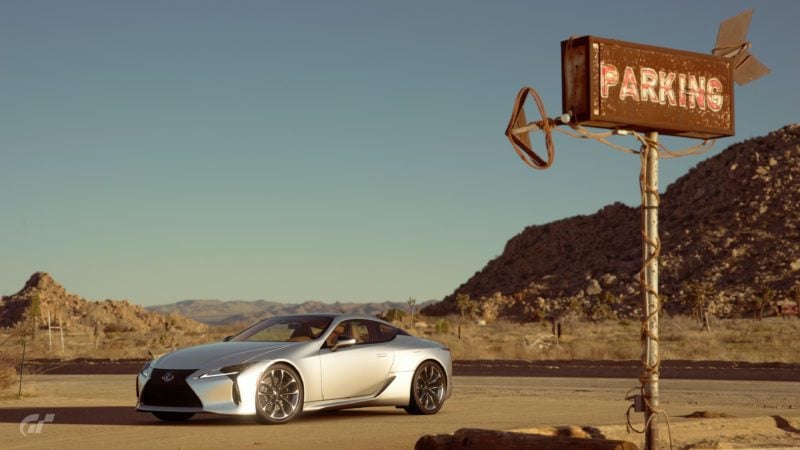
Graphics –
Polyphony Digital is filled with wizards. There’s simply no other explanation for the visual quality of this game.
I’m on a vanilla PS4, and this is easily one of the best-looking games I’ve seen this year. Just as it showed us in the PS3 days, Polyphony has a lock on lighting. The way the sun shines over the mountains at Dragon Trail and dances off the bodywork of your car is stunning. Running through the Nordschleife at night in cockpit view, the interior will light up as the car behind you strafes to find a way past.
The Green Hell is the star of every replay it’s in. No matter the time of day, it looks straight off a real-world race broadcast. Do yourself a favor and watch every one of your clean runs when you finish the seventh stage of the Mission Challenges. You’re welcome.
Players on the PS4 Pro will benefit from that system’s added under-hood power. While it isn’t quite true 4K, GT Sport is virtually indistinguishable from it on the Pro. But pixels only tell part of the story.
HDR is the big game changer in my eyes (pun intended). Yamauchi-san has made a big deal of the wide color gamut allowing the team to recreate Ferrari’s unique shade of red accurately for the first time. Don’t focus on that one single example: just know that every scene is improved with HDR. You feel the warmth of sunlight in a way that regular screens can’t portray.
Back on the vanilla PS4, I’m happy to report GT Sport is a smooth operator. The PS3-era games were riddled with frame rate issues, but that is thankfully a thing of the past. During my 20 or so hours with the game, I’ve maybe noticed a few drops here and there. Polyphony has also reduced, if not outright eliminated, screen tearing.
There are three minor graphical issues that keep the game from a perfect score. First is the obvious level-of-detail (LOD) pop-ins on opponent cars as they get close. I was under the impression adaptive tessellation made this a thing of the past.
Second is the shadows during a race: they flicker on the car exteriors, and remain oddly out of focus on the road surface until you’re a few feet away. The best place to spot this is on the tourist layout of the ‘Ring, where there’s a line ahead of your car that shadows instantly become more defined.
The final visual issue is the wimpy-looking rain effects. Currently, rain only happens on a handful of gymkhana-style events. The road surface looks great, with reflective puddles of standing water. But the rain is a light misting. It’s an unfortunate reminder of dynamic time and weather being cut. This weather trailer for GT5 looks more impressive.
You’ll note I haven’t really talked about Scapes. Snapping a still image in this mode can easily provide you with a pro-looking shot that can fool people into thinking it’s real. And it should do that, because that’s what these are: real photographs. Only the cars are computer-generated content here.
Scapes can be a lot of fun though. It’s pretty straight-forward to set up a shot, and while it offers less creativity in terms of camera placement than the old Photo Travel locations of GT6, the variety on offer makes up for it. Just note that there aren’t 1000+ locations available: there’s 1017 photos. Some of them are very similar, just with the camera panned 30 degrees.
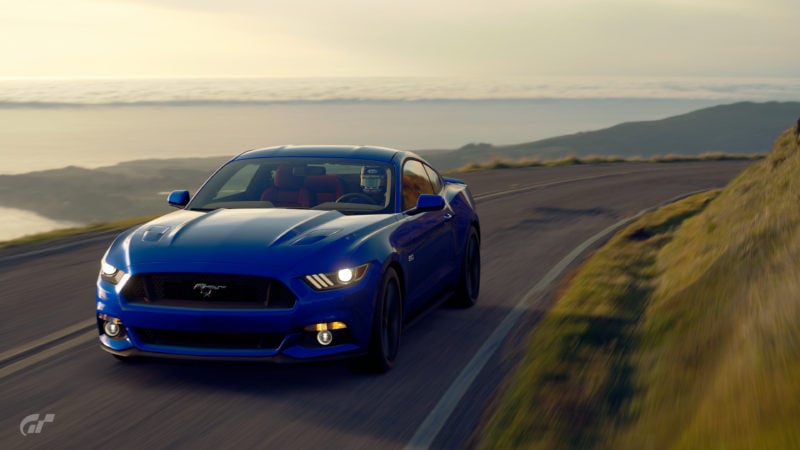
Sound Design –
I’d like to report a death. The long-running joke about Gran Turismo’s engine notes and vacuum cleaners is no more.
The sound team at Polyphony has done its homework. One of the first cars I bought in-game was the gorgeous Lexus LC500. I’d been around an RC F a few days prior, and the LC500 sounds nearly identical. That old-school V8 blat is present in the game, and I find myself shifting gears in the car just for the sound. That’s not something I could say about previous GT titles.
The 911 GT3 RS also sounds quite close to the real thing. It’s a tad muted from cockpit cam, but in replays or chase, the flat six sings.
It’s a little harder to judge the accuracy of other cars in the game, as so many of them have no real-world counterparts. But none of them feature the asthmatic V6 sound of the poor C6 Corvette in GT6, so that’s a win in my books.
Of course, it isn’t all just about engine notes. The sound engine is nuanced: you’ll hear a helicopter overhead as you slice through corner. Dip a tire off-track and the wheel wells will suddenly get very talkative. Tire squeal actually sounds different now depending on what the rubber is doing.
In the racing cars, gear whine can be a little overbearing. It might dominate the interior experience in something like the BMW M6 GT3, with its industrial-sounding turbo V8 getting drowned out. But a Corvette? Those things are loud, shake-you-to-your-bones animals, and that doesn’t come across here.
More so than arguably any other racing game, the soundtrack plays an integral part in GT Sport. Truth be told, I’m not the biggest fan of the new theme music found in the intro. It feels a little too ’90s Disney, like a cut track for an inspiring scene in Hook. It’s certainly no Moon Over The Castle.
But the rest of the soundtrack hits on that elusive GT feel. Leave the main menu idle for a minute, and the ensuing eye candy gets paired with jazz, salsa, and anything in between. There’s one particular song that reminds me of my favorite bar. It has tin ceilings and serves a wicked Manhattan.
While that may not be the setting that springs to mind when you think “digital motorsports”, it’s emblematic of the sort of atmosphere GT is capable of creating. As ever in terms of game soundtracks, though, your mileage may vary.
The important thing here is that, thanks to improved car sounds, a robust engine to place them in, and a well-curated soundtrack, GT Sport is absolutely class competitive. One of the franchise’s most prominent Achilles’ heel is now a strong leg to stand on.
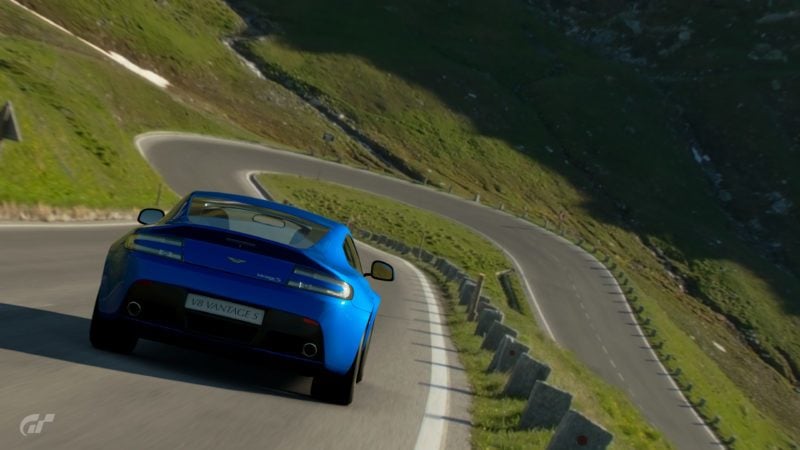
The Verdict
GT Sport was bound to be divisive. Such a big change to the underlying formula of the game makes it inevitable.
Back when GT5 released, I remember reading a review that called it a 10/10 simulation in a 5/10 game. That sort of rational feels oddly appropriate for GT Sport. What it does, it does very well: namely, funnelling people into a consistent, largely fair online experience. The iRacing comparisons are not simple name-checking. But as an overall package in the long-running premier Sony franchise, it’s lop-sided.
As engaging as Sport Mode can be, its inclusion should not be mutually exclusive to a solid offline experience. Once you’re done with campaign mode (which will take less than a week of regular play), you can either re-run events (for Mi/XP only) or head to online/arcade racing. That’s all dependent on the servers, too. It’s beyond frustrating to have the game lock you out of practically everything as soon as it loses a connection.
GT Sport feels very much like it has two distinct personalities. On one hand, it really wants to be the first big esport racing game on consoles, and has a clear, solid structure in place to do just that. It trains novice drivers (though the Driving Etiquette requirements are laughable), and rewards experienced ones. It’s not aiming to simulate real-world racing, a la PCARS2: the large number of fantasy cars and tracks makes that clear. As ever, Gran Turismo marches to the beat of its own drum.
On the other hand, it’s a peerless photography simulator and (justifiably) treats the automobile as art: leave the game idle and it is the best sort of screensaver an auto enthusiast could have. If that sounds like a slight, it’s not — Sport celebrates the car, albeit in a more hands-off way than series vets may be accustomed to. That’s not necessarily bad; just different.
With a whole bunch of stat-based CARPG elements, it still has ties to the original games, but it feels oddly out of place now. The paltry number of tracks wears thin very quickly, especially once you discount the rally circuits and ovals. That may be the game’s biggest hurdle in long-term appeal.
That all said, I believe there’s a lot of potential here. Sport is a game that will grow and evolve over time. We can only score what it currently is however, not on what it may be in the future. But that means we’ll be revisiting it a few months down the line — much as we will with Project CARS 2 and Forza Motorsport 7 — to judge how it’s changed.
Despite the hangups listed above, it’s pulled me in. The GT vibe is a unique one in the industry, even now, and if competitive racing is your bag, GT Sport is the place to be on PS4.
Gran Turismo Sport (PS4)
Learn more about how our rating system works.

See more articles on Polyphony Digital and Review.

